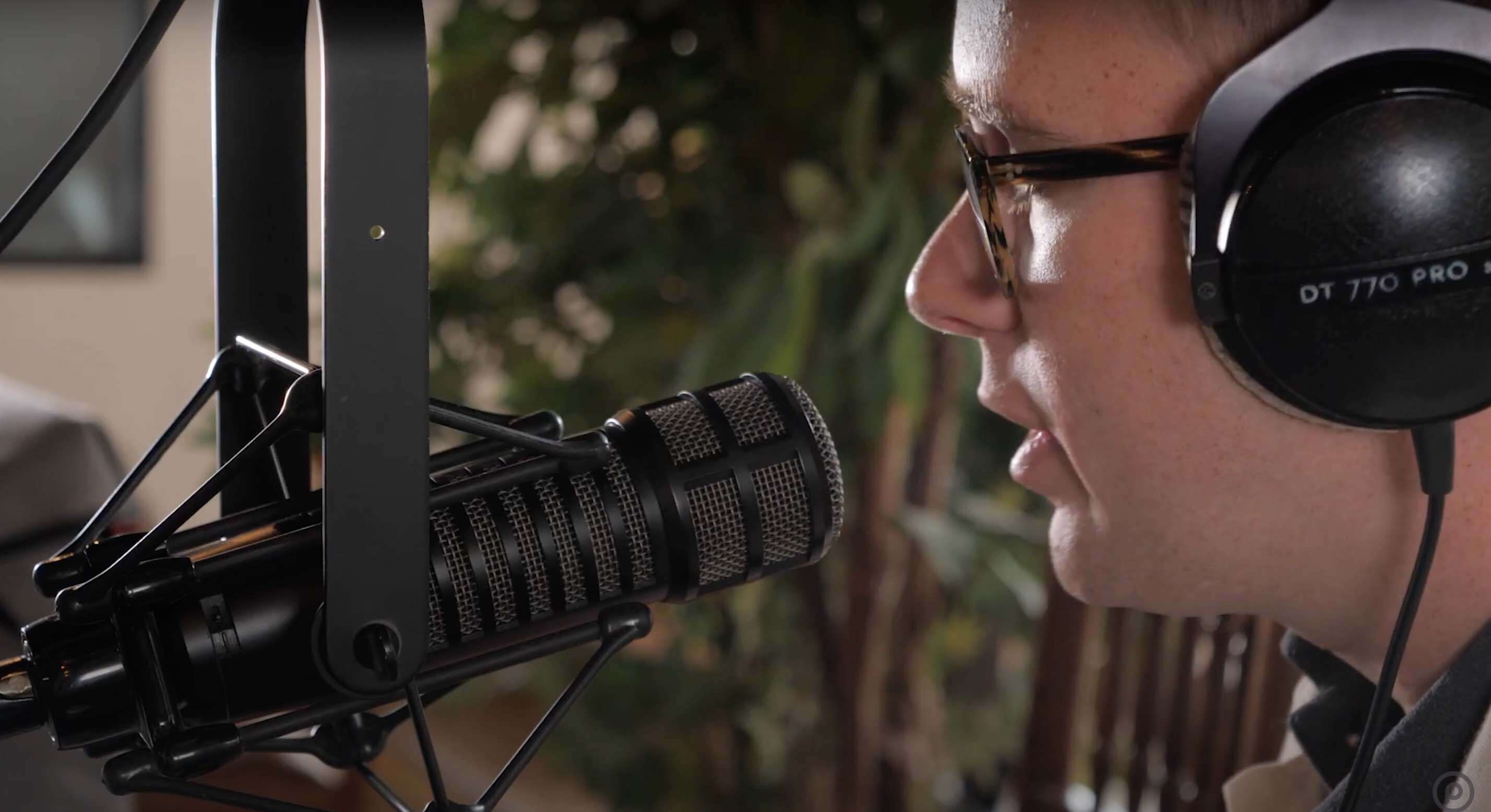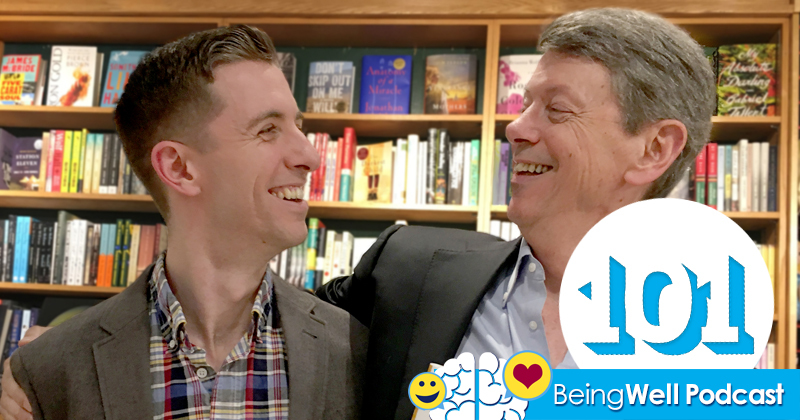Once someone’s clicked on your podcast, you’ve got to keep them hooked till the end of the episode. To do that, you’re going to need a coherent and engaging podcast structure.
But how do you come up with a solid podcast structure, and actually stick to it for every episode? Well, it basically comes down to good planning. In this article we’ll cover:
- Why podcast structure matters
- How to use the fundamentals of storytelling in your episodes
- 3 key elements of podcast structure (beginning, middle, & end)
- Why planning episodes out will help keep you on track
Why Podcast Structure Matters
If you’re talking all over the place with no idea of where you’re going next, your listeners will be lost. Using a simple podcast structure makes it a lot easier to keep them on board and following along with what you’re saying.
You’ve got to make sure your episodes are presented in a way that makes sense. Amazing snippets of audio won’t be enough to keep an audience hooked if they’re structured in a confusing way. So it’s worth giving it some thought upfront.
Having a standard podcast structure you always follow can also help you make your actual content better. Instead of spending all your time figuring out how to put your episode together, you can put your energy into coming up with ideas for your content. You don’t have to worry about the order of everything if you’ve already got a basic structure to slot each point into. Sometimes having some set rules in place can actually help you come up with more creative ideas, by giving you a space to work within.

Thankfully, mastering the basics of podcast structure is actually quite simple. It essentially comes down to storytelling. No matter what your podcast is about, structuring your podcast like a story can help reel people in and keep them listening.
Why Storytelling Helps Keep Listeners Engaged
Incorporating stories into your podcast is one of the most effective ways to make it immediately more engaging.
Podcast expert Colin Gray agrees that making your topic into a story ‘is the bit that really engages folks - it makes it real for them’. He explains:
That story … makes a huge difference, because people can see it working, they can imagine it in their heads.
The way you tell your story will depend on your podcast format. But no matter what your podcast is about, the fundamentals of storytelling can help you make it more engaging and useful for listeners.
The 3 Essential Elements You Need in Your Podcast
So how do you actually tell a good story? Well, every story needs a beginning, a middle, and an end. A podcast episode is no different. Get these three elements right, and you’ve got yourself the perfect podcast structure.
The beginning is where you’ve got to hook people into your episode, and the middle is for the main content of your show. The end is where you remind listeners exactly what they’ve gained and where they should go from here. Let’s go into these elements in more detail.
1. The Beginning
This is your chance to hook people in. Your goal is to make listeners excited for the whole episode. You’ve got to make it clear right from the start why they should listen, and what they’ll gain from your podcast.
This isn’t a time to be vague or leave your audience guessing. It’s usually better to be upfront with exactly what your episode is going to cover. Colin Gray explains:
If people know what’s coming, they can better process the stuff that they’re taking in right now.
So you should give a brief outline of the podcast episode content upfront. This will help your existing audience take in the content more easily. And it also makes new listeners more likely to stay until the end, as they already know exactly what they’ll gain from it.
Remember new listeners don’t have any loyalty to your podcast yet. So you’ve got to grab their attention and give them a reason to continue listening. Your intro or ‘beginning’ segment should cut straight to the point. As a rule of thumb, if your episode intros run longer than 4 - 5 minutes, you might lose some impatient listeners.
If you record an interview-based podcast, all you need to do is introduce your guest summarise the key points you covered in the conversation. This has now become standard practice among many popular hosts such as Sam Harris and Coleman Hughes. For an example of how it should sound, check out the interview intro below:
So a perfect beginning to a podcast includes a clear and straightforward outline of everything you’ll cover, and reasons for your listeners to stay for the whole episode. Tell them exactly what they’ll gain from listening.
2. The Middle
The main content of your podcast goes here. What this part looks like will vary depending on your podcast format and topic. But whatever you do, the power of storytelling can help make this part more engaging and memorable.
For interview podcasts, the stories will mostly come from giving real-world examples of what you’re talking about. So if you’re explaining how to improve leadership skills, try to provide concrete examples of how you (or your guest) put some advice into practice.
If you host a solo podcast about your area of expertise, sometimes you might have to be a bit more creative with your storytelling. For example, if you're trying to teach listeners about chemistry, you could tell a story about the ‘relationship dramas’ of hydrogen and oxygen trying to ‘pair off’ with each other. That’s definitely going to be more memorable than a bunch of long technical words or explanations. The fancy explanations are fine to include too, but translating things into stories with relatable narratives is crucial if you want listeners to remember things.

If there’s a lot of content to cover, you might want to break up your ‘middle’ segment into a few segments. Bitesized chunks are much more digestible for listeners than an hour-long lecture with no breaks. We’ve all been in the position where a talk is so long and rambling you end up nodding off or zoning out. Don’t let that happen with your listeners.
If your podcast is long, keep them engaged the whole way through by breaking up your content. You can be as creative as you like with how you do this. Anything from segment intro music to ad breaks can signal to your listeners that the topic is changing, and they should pay attention.
3. The End
The end of your podcast is crucial if you want to build up a loyal audience. It’s an opportunity to explain how people can support the show, point them towards any relevant next steps, and remind them how they’ve benefited from listening.
Whether you host an interview-based or solo podcast including a summary at the end of each episode listing the key takeaway points is a great way to enhance the listening experience for your audience. Not many podcasters currently do this, so it’s a great way to make your show stand out.
For a great example reference point, check out the final few minutes of any recent episode of the Being Well Podcast. Host Forrest Hanson summarises the key things to take away from each conversation. It takes a bit of extra time. But it adds a significant amount of value.

Your conclusion should also include clear prompts for actions you want your audience to take. Maybe you just want people to subscribe and follow you on social media. But if you host a teaching podcast, it’s also a good idea to tell listeners what they can do to apply what they’ve just learned in real life.
For example, if your podcast is about how to market yourself on social media, you could tell people to go and create a new post schedule, and apply all the tips and tricks from your episode into their plan. This helps you really highlight how your audience can gain from your podcast. Colin Gray explains:
When they do the action they’ll get that little hit of success. They’ll be able to point to something they achieved in the real world as a result of listening to your podcast.
Results matter. And delivering them for listeners means they’ll be much more likely to stick around for the next episode.
Plan Out Your Episodes First
Now you know what your podcast structure needs to include. So what’s the easiest way to get there?
Planning out your episodes before you start recording can save buckets of time in the long run. You can go into as much detail as you want here. If you don’t want to write a full script, just a bullet point outline is enough to keep you on track. This will help you know what to say in your introduction, as you’ll already know what the listeners will gain from the whole show. It should also stop you waffling too much while you’re figuring out what your next point is.
It’s completely fine to stray away from your outline if you think of more points to say, or if a guest tells a great story you hadn’t planned for. But having one prepared will help you know what to say next when you get stuck. It’ll also help you stick to a basic podcast structure, making your podcast easier to follow and more engaging for your audience.
Get Ready to Record!
There you have it, all you need to make your perfect podcast structure. Of course, you can break these rules if you have good reason to – only you know what’s best for your podcast. But having a basic podcast structure to start with makes it much easier to make your content engaging and useful.
With a good beginning, middle and end, your listeners will find your content easy to follow, memorable, and more useful. You’ll end up keeping listeners for longer, and they’ll be more likely to come back for more next time you post an episode.
For our full, comprehensive guide on how to start a podcast, click here.









